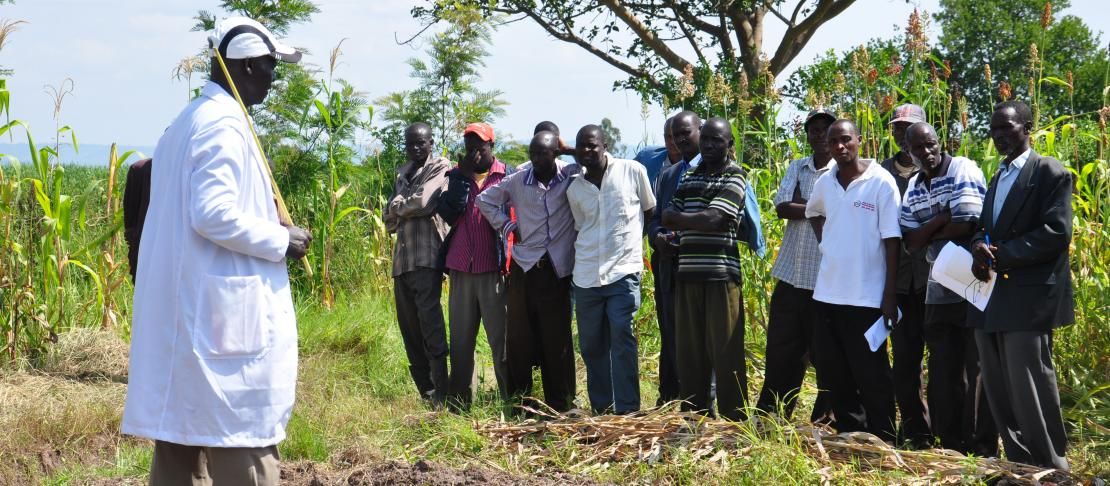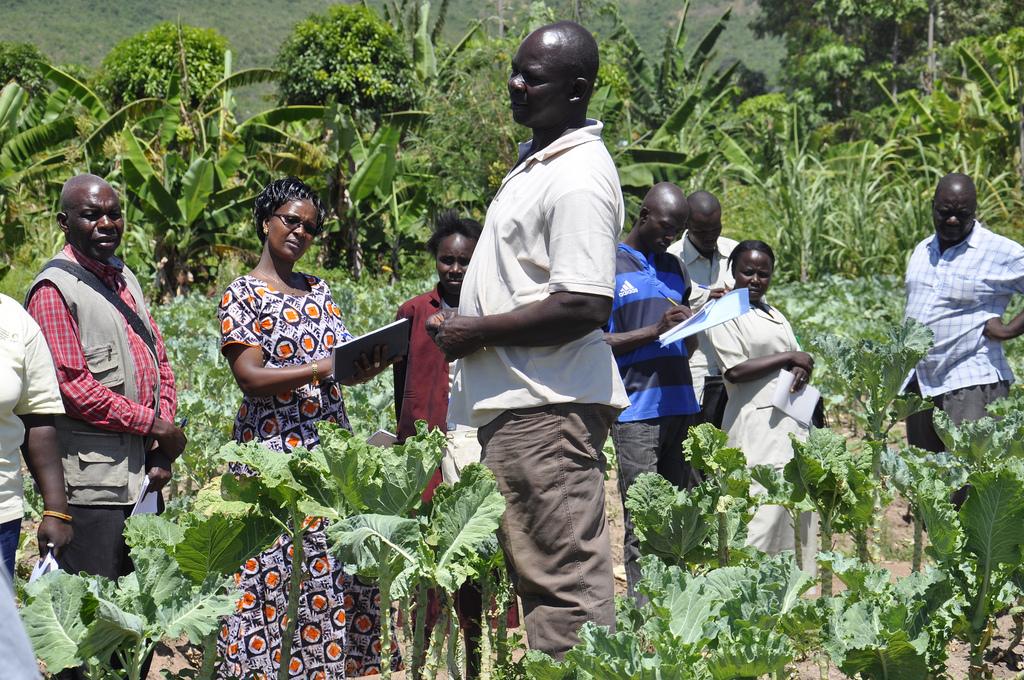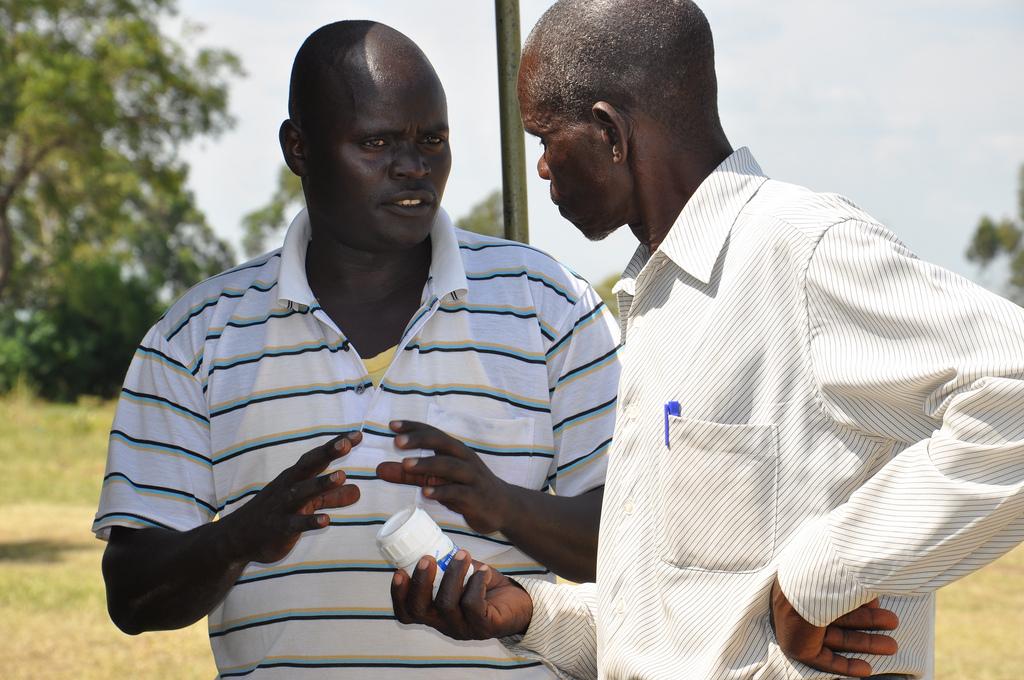Getting to grips with how farmers perceive climate variability and its impacts

Through vigorous trainings on climate terminology and forecasts, farmers in Wote Kenya are now better equipped to understand the real implications of climate change, while realizing that they need to plan farm activities more strategically.
For many farmers, climate variability is not a new issue. Coping with natural climate variability has always been a challenge, especially in the semi-arid areas where climatic conditions are marginal for crop production and are highly variable within and between seasons.
While the amount and distribution of rainfall during the crop season have a direct impact on the growth and how well crops will do, the uncertainty and risk associated with between the season variability influences farmers' decision-making, especially in adopting improved technologies such as selection of crops and varieties and use of fertilizers.
Over the years, farmers have developed a fairly good understanding about variability in the climate at their locations mainly through their keen observation, experimentation and practice than from formal measurements. However, extreme variability in the climate and random nature of that variability makes it difficult to discern accurately the trends and variability based on casual observations.
It is also likely that farmer assessment of seasons is more influenced by the overall outcome of the crop or livestock enterprise, whose performance depends on a number of other factors such as type and status of the soil and other management practices employed. This makes separating climate impacts from other drivers difficult.
Understanding farmers’ perceptions of climate variability
Our studies on farmer perceptions have identified certain limitations in their understanding of climate variability and its impacts on agriculture.
These include over estimation of negative events leading to higher perception of risk, placing higher emphasis on risk reduction than on capitalizing on the good seasons, lack of trust in seasonal climate forecasts and low awareness about potential role of climate information in planning and managing farm activities.
The International Crops Research Institute for the Semi-Arid-Tropics (ICRISAT), in collaboration with Kenya Agricultural Research Institute (KARI) and Kenya Meteorological Department (KMD) and with support from CCAFS theme 2 on Risk Management as well as the CCAFS East Africa regional office, has conducted a systematic study to assess how farmer understanding of probabilistic climate information can be improved and what effect it will have on decisions taken by smallholder farmers in managing their farms.
Conducted in Wote, Makueni County in Kenya, the study included two different approaches. The first one sought to enhance farmer understanding of climate variability and its impacts on agriculture through a two day training program.

A workshop for farmers in wote Kenya was recently held. the aim was to help farmers better understand climate terminology. Photo: p.kimeli
The main aim of the training was to help farmers better understand key climate terms such as weather, climate, variability, uncertainty and probability; present observed trends and variability in the local climate derived from historical climate data; make them aware about major factors affecting climate such as El Nino and la Nina; presenting seasonal climate forecasts and assessing their usefulness in planning farm operations; and identifying management practices that are appropriate for different season types classified as poor, average and good.
The second approach included developing and presenting an agro-advisory which is a summary of agricultural activities that a team of experts drew from the local extension officers, agricultural scientists and meteorologists. Thereafter, changes in farmer decisions were assessed by conducting formal surveys one before training and providing climate information and one after the season and harvest of crops.
By evaluating the historical trends in rainfall variability, presented through bar charts, farmers realized they weren't capitalizing on the opportunities created during good seasons, which accounted for more than the poor seasons at this location. The farmers then quickly started questioning how they can know what type of season they are going to get at the beginning of the season when key decisions are to be made. At this stage the focus moved to forecasts.
Most farmers in Wote Kenya are not aware about the different types of forecasts available and their potential role in planning and managing farm decisions and activities.
The training provided an opportunity for farmers to get a clear idea about the short duration weather and long duration seasonal climate forecasts and evaluate their usefulness in making investment decisions. By comparing past forecasts with what has happened, farmers were able to evaluate the reliability and also the potential usefulness of forecasts in making various management decisions.
One of the interesting aspects of this exercise is the amount of discussion and debate that the presentation of climate information, both historical and forecasts, prompted amongst the farmers. For example, farmers discussed at length the criteria to be used in evaluating forecasts. At the end they concluded that the best way to evaluate the forecasts is based on the outcome of the forecast based decisions.

Through training, farmers in Wote kenya realized they need to approach farming with a strategy in mind. Photo: P. Kimeli
Taking a more strategic approach to farming
The most significant outcome of the training program is the realization by farmers about the need for adopting a more strategic approach in managing risks and opportunities created by variable climatic conditions. The program enabled the farmers to make a more realistic assessment of climate variability as well as the role of forecast information in planning and managing their farms.
Among the key decisions that farmers have identified are selecting the right crops and varieties, allocation of land to various crop enterprises and making investments on costly inputs such as fertilizers.
The first season results have clearly indicated that significant benefits can be derived when farmer experience and knowledge is supplemented with more accurate information. The change in attitude from the current thinking that climate is "God given" and nothing can be done about it to a realization that there are opportunities to make best use of the variability, is a big step forward in preparing farmers to adapt to climate variability.
Dr. KPC Rao is a Principal Scientist at the International Crops Research Institute for the Semi-Arid-Tropics (ICRISAT)



